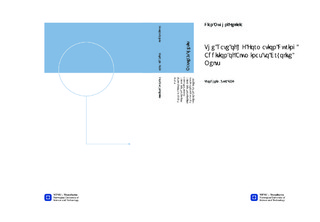| dc.contributor.advisor | Rosenkilde, Christian | nb_NO |
| dc.contributor.author | Fellicia, Dian Mughni | nb_NO |
| dc.date.accessioned | 2014-12-19T13:26:53Z | |
| dc.date.available | 2014-12-19T13:26:53Z | |
| dc.date.created | 2012-12-03 | nb_NO |
| dc.date.issued | 2012 | nb_NO |
| dc.identifier | 573671 | nb_NO |
| dc.identifier | ntnudaim:8186 | nb_NO |
| dc.identifier.uri | http://hdl.handle.net/11250/249192 | |
| dc.description.abstract | One of the biggest contributors of the gas emission in smelting process of aluminium is fluoride. Major contributor to the fluoride emissions is the hydrogen fluoride (HF) gas. HF gas is formed when fluoro compounds from the cryolite react with water in the alumina. This study concerns on the rate of HF formation which is interesting due to its direct contribution to the material loss, changing of chemical composition of the bath and also the loss of current efficiency. A tunable diode laser was used to measure the HF and H2Oconcentration in the off gas during additions of alumina containing different types and amounts of water to a cryolite melt at 1000ºC. The residence time of the alumina water was varied by varying inert nitrogen gas flows through the experimental cell. These types of experiments are referred to as melt experiment . The water content of the alumina samples was studied by loss on ignition (LOI). In addition to the melt experiments, the HF(g) behavior inside the experimental cell was studied by introducing argon gas with 1% HF to the cell at 1000ºC when no melt was present. Finally, so called alumina water evolution experiments were conducted where the rate of alumina water released upon rapid heating was studied. Alumina was added to an empty quartz container holding 1000ºC during which the off gas analyzed with respect to H2O concentration. From the LOI result concluded that alumina B content more moisture, alumina B contains more under calcined matter compared alumina A and alumina B has higher HF formation potential than alumina A. From the alumina water evolution experiments and melt experiments found that formation of HF is very rapid. HF formation is not dependent on the nitrogen flow rate and no HF adsorption occurs as a function of flow. The amount HF generation is not necessarily flow dependent but the profile (the curve shape) and the mixing flow is dependent. Since this experimental set-up furnace can be considered as a reactor, CSTR modeling was chosen to compare the experimental data and the model. | nb_NO |
| dc.language | eng | nb_NO |
| dc.publisher | Institutt for materialteknologi | nb_NO |
| dc.subject | ntnudaim:8186 | no_NO |
| dc.subject | MSLIMETAL Light Metals Production | no_NO |
| dc.title | The Rate of HF Formation During Addition of Aluminas to Cryolite Melts | nb_NO |
| dc.type | Master thesis | nb_NO |
| dc.source.pagenumber | 90 | nb_NO |
| dc.contributor.department | Norges teknisk-naturvitenskapelige universitet, Fakultet for naturvitenskap og teknologi, Institutt for materialteknologi | nb_NO |

